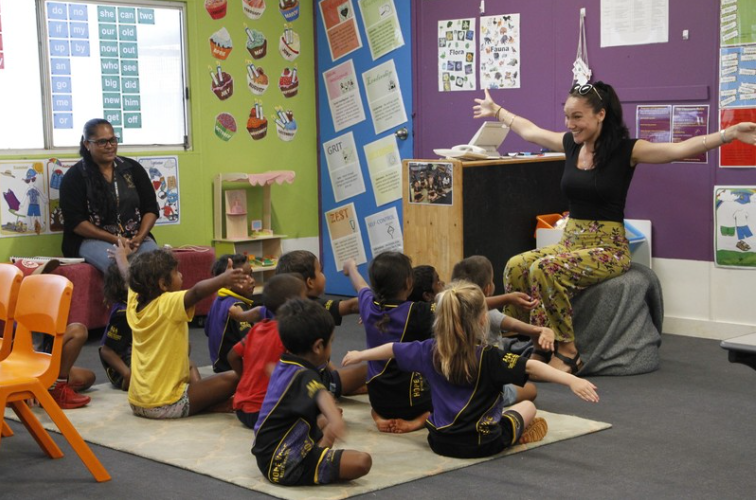Back to Course
Practice Provide Positive Praise and Affirmations
0% Complete
0/0 Steps
-
Module Introduction2 Topics
-
Delivered With Fidelity15 Topics|2 Tests
-
Cover
-
Module Objective
-
What Happens When Positive Praise and Affirmations Are Provided With Fidelity?
-
How to Provide Positive Praise and Affirmations
-
Using Affirmations in Lessons
-
The Teacher Teaches Expected Behaviours
-
The Teacher Teaches Expected Behaviours: Example
-
The Teacher Delivers Lessons Fluently While Providing Praise
-
The Teacher Delivers Lessons Fluently While Providing Praise: Example
-
Providing Positive Praise Throughout the Day
-
Students Are Confident, Engaged Learners and Have Appropriate Behaviour
-
Students Are Confident, Engaged Learners and Have Appropriate Behaviour: Example
-
The Teacher Contributes to Building a High Expectations School Culture
-
Check Your Understanding
-
Test Your Understanding
-
Cover
-
Not Delivered With Fidelity11 Topics|2 Tests
-
Cover
-
What Happens When a Technique is not Delivered with Fidelity
-
The Teacher does not Promote Expected Behaviours
-
The Teacher does not Promote Expected Behaviours: Example
-
Teachers are not Practising Adequately to Improve their Practice
-
Teachers are not Practising Adequately to Improve their Practice: Example
-
Students are not Confident, Engaged Learners and do not have Appropriate Behaviour
-
Students are not Confident, Engaged Learners and do not have Appropriate Behaviour: Example
-
The Teacher does not Contribute to Building a High-Expectations School Culture
-
Check Your Understanding
-
Test Your Understanding
-
Cover
-
Barriers That Impede Fidelity9 Topics|2 Tests
-
Cover
-
Barriers that Impede Delivering the Technique with Fidelity
-
Using Deductive Logic to Identify the Cause of the Barrier
-
Not Understanding why Providing Positive Praise and Affirmations is Required
-
Do not Know how to Provide Positive praise and Affirmations
-
Unfamiliar with Lesson Content so Unable to Provide Positive Praise or Affirmations
-
Not Providing Positive Praise Leads to more Incidences of Inappropriate Behaviour
-
Check Your Understanding
-
Test Your Understanding
-
Cover
-
Removing Barriers That Impede Fidelity15 Topics|2 Tests
-
Cover
-
Ways to Tackle Barriers So That the Technique Is Delivered With Fidelity
-
Teachers Learn Why Positive Praise and Affirmations Are Required
-
Process
-
Understand How to Give Positive Praise and Affirmations
-
Process
-
Become Familiar With the Lesson to Be Able to Add Specific Positive Praise and Affirmations
-
Prepare for the Lesson Process
-
Practice Delivery Process
-
Lesson Practise While Adding Positive Praise
-
Prevent and Manage Inappropriate Behaviour
-
Prevent and Manage Inappropriate Behaviour Process
-
Check Your understanding
-
Test Your Understanding
-
Lesson Completed
-
Cover
-
Module Completion Survey1 Topic
Participants 439
Lesson 2,
Topic 11
In Progress
Students Are Confident, Engaged Learners and Have Appropriate Behaviour
ddewell@goodtogreatschools.org.au August 7, 2023
Lesson Progress
0% Complete

Students are Confident, Engaged Learners and have Appropriate Behaviour
When praise singles out effort and work-products, students can see a direct link between the effort that they invest in a task and improved academic or behavioural performance. Providing praise that focuses on what students can control shows them that hard work pays off.

How it works:
- The teacher explains the positive learning behaviours required for academic success to motivate students engaged with their learning.
- When students know what behaviours the teacher will accept, boundaries are clearly set. Students are aware of the expectations and are more likely to behave appropriately. Students can focus on their learning and be confident learners.
- Teachers who set goals for lesson progression motivate students to focus on learning and engage in all parts of the lesson. Students are motivated by setting and achieving goals and experiencing success, making learning fun.

